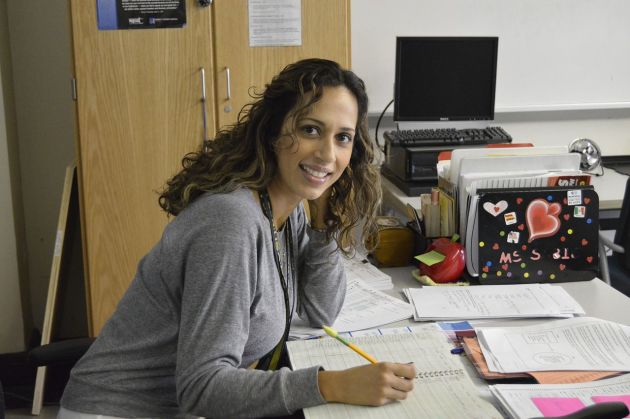Currently, social scientists and neuroscientists within the Mind, Brain, and Education research community are studying the interactions between cognition, brain functions, and learning. The goal of studying these interactions is to improve the ways in which children absorb, retain, and apply knowledge. The discoveries made within this research community are applicable to foreign language learning. I will briefly go over the overarching research then discuss how spaced repetition in combination with good technology can greatly optimize learning in the classroom.
 A 2011 article from the New York Times by Anne Murphy asserted that the quantity of students’ homework is a lot less important than its quality. She argued that spaced repetition (SR), retrieval practice, and problem-solving exercises were extremely effective as learning tools. Essentially, the more varied the tools used by teachers in the classroom the more likely students are to retain information. These tools are also especially beneficial in the foreign language classroom.
A 2011 article from the New York Times by Anne Murphy asserted that the quantity of students’ homework is a lot less important than its quality. She argued that spaced repetition (SR), retrieval practice, and problem-solving exercises were extremely effective as learning tools. Essentially, the more varied the tools used by teachers in the classroom the more likely students are to retain information. These tools are also especially beneficial in the foreign language classroom.
SR is an irreplaceable part of second language learning and it has long been argued that it’s one of the best methods for retention and acquisition. Newer research on the topic of spaced repetition now explores what type of repetition is the most useful for language learners. For example, a 2003 research study asked whether short term or long term intervals were more effective when combined with feedback for  students. After testing university students learning foreign language vocab, it turned out that using long term spacing between tests accompanied with feedback profoundly optimized learning. The gains in vocabulary retention were present even when substantial spacing resulted in students making more errors. In other words, trying to minimize errors by having shorter repetition intervals is not as effective as extremely long spaced intervals with feedback.
students. After testing university students learning foreign language vocab, it turned out that using long term spacing between tests accompanied with feedback profoundly optimized learning. The gains in vocabulary retention were present even when substantial spacing resulted in students making more errors. In other words, trying to minimize errors by having shorter repetition intervals is not as effective as extremely long spaced intervals with feedback.
 Now any teacher knows how invaluable SR is for the classroom. But the question becomes what is the most effective way to incorporate technology in the classroom while keeping the benefits of spaced repetition in mind? A 2010 paper by Robert Godwin-Jones discusses a number of emerging technologies designed to optimize second-language vocabulary learning using spaced repetition software (SRS). Using SRS programs or technology for vocab learning in your classroom eliminates the need for a teacher to continually keep track of when it’s time to review certain concepts or vocabulary. Using good SRS enables students to commit things to their long-term memory.
Now any teacher knows how invaluable SR is for the classroom. But the question becomes what is the most effective way to incorporate technology in the classroom while keeping the benefits of spaced repetition in mind? A 2010 paper by Robert Godwin-Jones discusses a number of emerging technologies designed to optimize second-language vocabulary learning using spaced repetition software (SRS). Using SRS programs or technology for vocab learning in your classroom eliminates the need for a teacher to continually keep track of when it’s time to review certain concepts or vocabulary. Using good SRS enables students to commit things to their long-term memory.
 There are numerous flashcard-based SRS that currently exist on the market. However, most of the spaced repetition software on the market are not fully customizable for teachers while being highly adaptive for students, nor do all of them provide important actionable data for both the teacher and students. Here at ClassTracks, we are passionate ambassadors of spaced repetition learning. Our flashcard-based software application offers to bridge this glaring gap between available customizable features for teachers and the highly adaptive features for students. As we keep our eye out on new research findings on blended learning tools, we are excited to be part of this growing SRS space within education technology. To learn more about ClassTracks, please visit us here and send us a message by commenting below. Happy Learning!
There are numerous flashcard-based SRS that currently exist on the market. However, most of the spaced repetition software on the market are not fully customizable for teachers while being highly adaptive for students, nor do all of them provide important actionable data for both the teacher and students. Here at ClassTracks, we are passionate ambassadors of spaced repetition learning. Our flashcard-based software application offers to bridge this glaring gap between available customizable features for teachers and the highly adaptive features for students. As we keep our eye out on new research findings on blended learning tools, we are excited to be part of this growing SRS space within education technology. To learn more about ClassTracks, please visit us here and send us a message by commenting below. Happy Learning!





